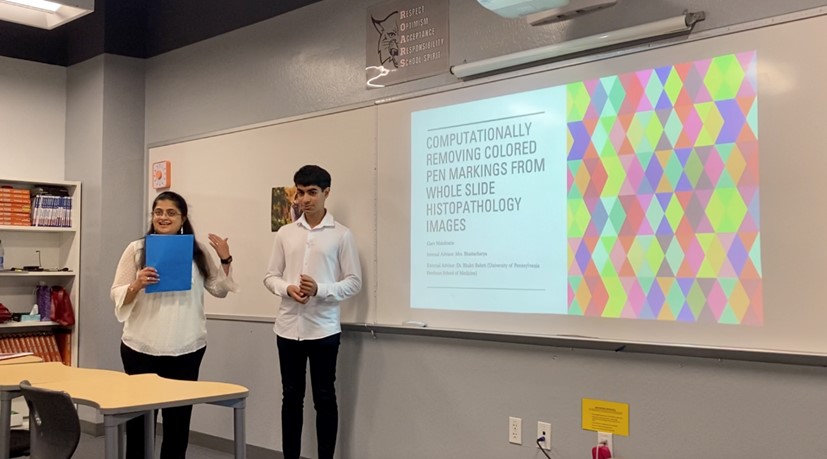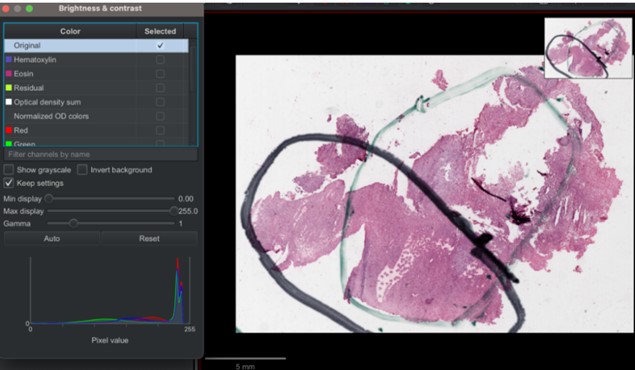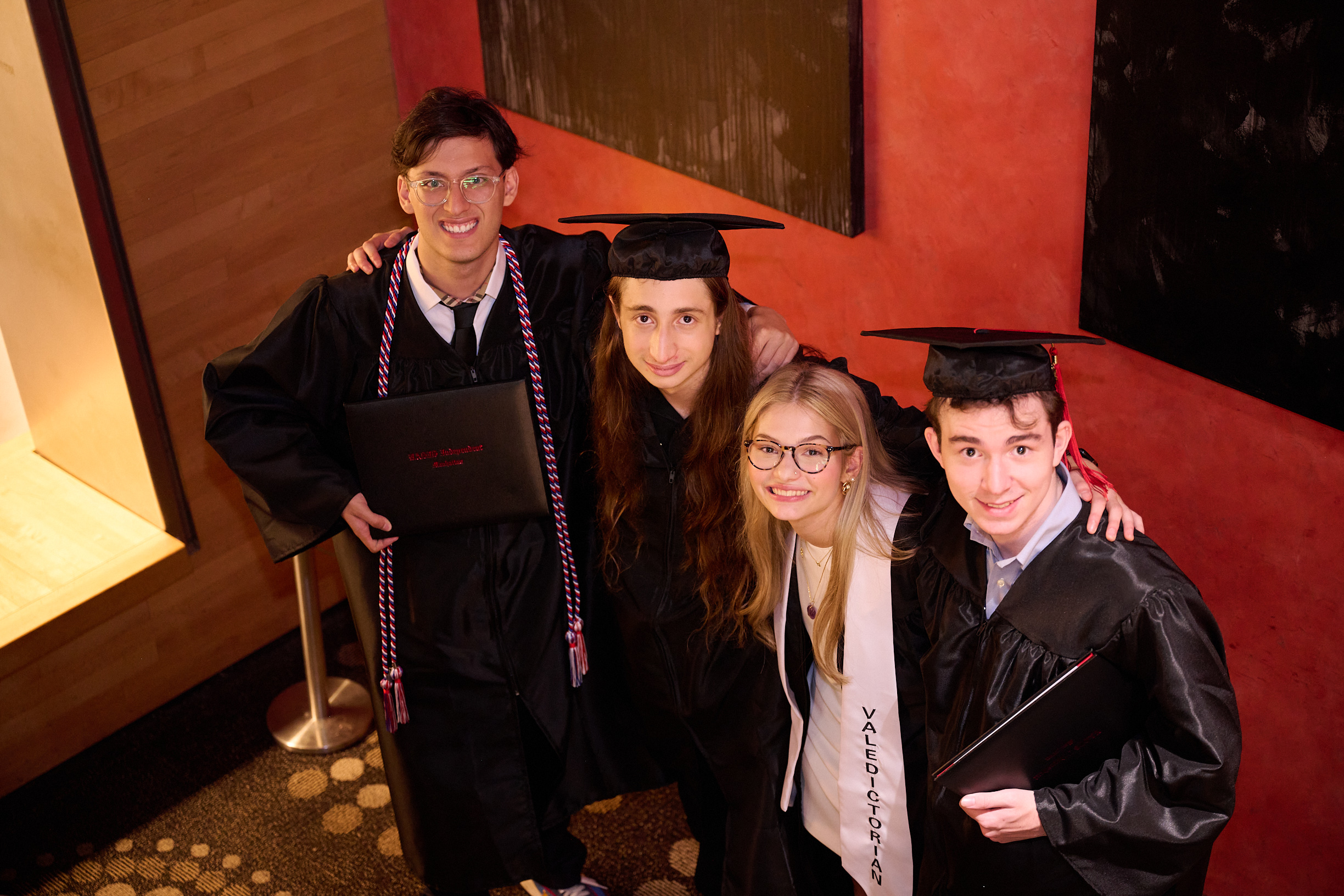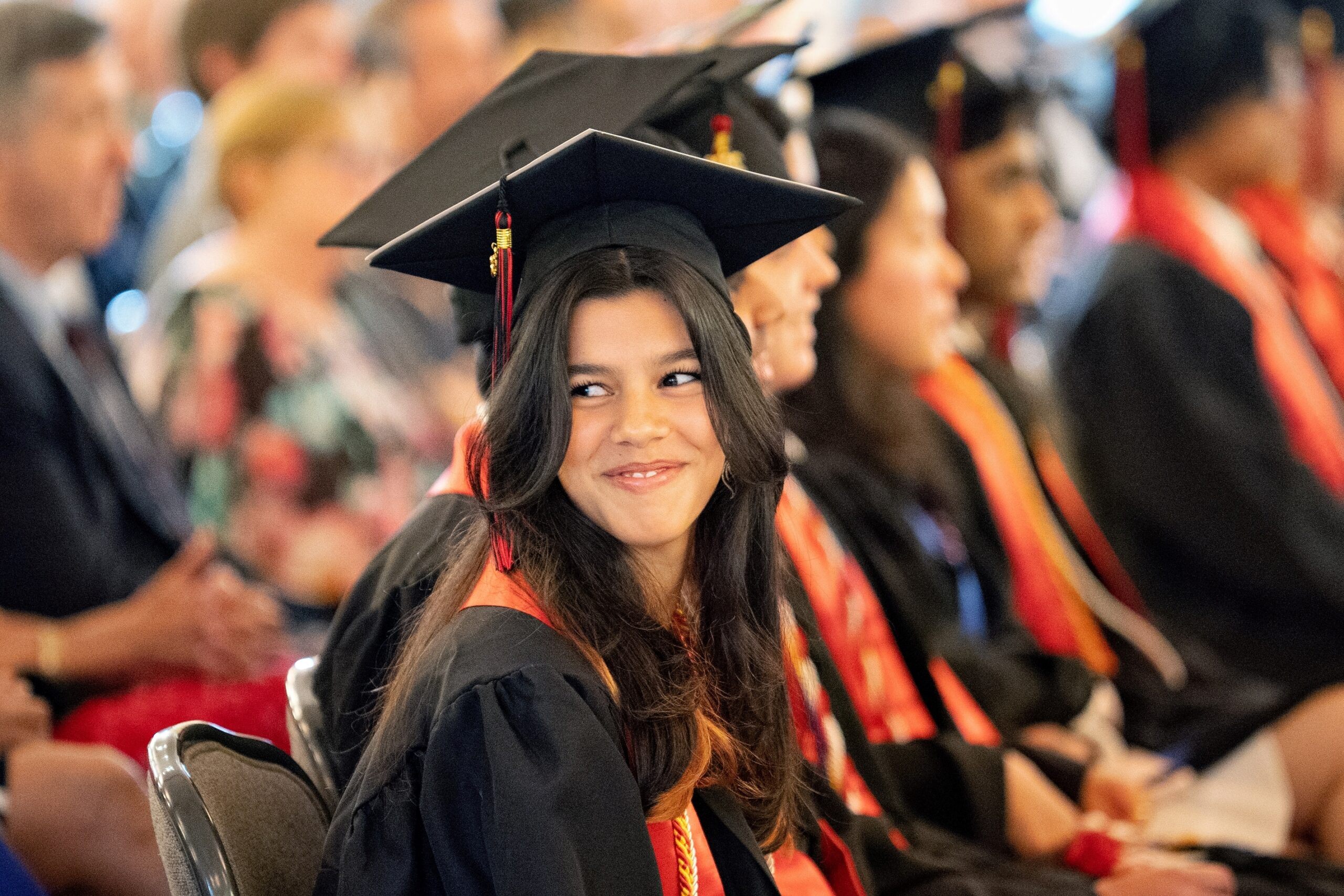October 26, 2023

Passion, Perseverance, and the Intersection of Biomedical Research & Computer Science: Meet the Winner of the 2023 Fellows Scholarship for Excellence in Senior Projects!
The leaves are falling, the air is turning crisp, and seniors are putting the finishing touches on their college applications: it’s October, so one would think that the third trimester would be far from students’ minds at the moment. In reality, seniors at BASIS Independent Schools are hard at work in the beginning stages of their Senior Projects!
Senior Projects are the culmination of the BASIS Curriculum. They are student-led, off-site projects requiring students to apply their classroom-based-education to experimental research, professional learning, and their own intellectual passions. Participating students must submit project proposals and syllabi to their campus’s Senior Project Committee in the fall and defend their research questions and methodologies in the winter. They work on their projects for a minimum of 15 hours per week for 10 weeks and meet regularly with an expert in the field as their project’s external advisor. Additionally, they post weekly blog entries about their experiences, successes, and challenges. Past projects have ranged from studying the chemical composition of different paint pigments throughout history, to evaluating the architecture of transportation facilities, to engineering robotic artificial limbs—it’s incredible to see how students contribute to their chosen field, and we look forward to what the Class of 2024 will achieve!
To kick off a new year of Senior Projects, we are sharing a conversation with the inspiring winner of the 2023 Fellows Scholarship, a $10,000 prize awarded to one project per year. Garv Mehdiratta, recent graduate of BASIS Independent Silicon Valley (BISV) and current University of Pennsylvania student, impressed our committee with his project titled “Computationally Removing Colored Pen Markings from Whole Slide Histopathology Images.” In the nomination letter, his BASIS Independent Schools Advisor, Ms. Bhattacharya, wrote, “the results of his project will enable the unlocking of new cancer research findings and save countless lives.”

Senior Project Advisor, introduces his project presentation at Senior Project Day.
Garv sat down with Ms. Linda Louis, Senior Director of Curriculum, to discuss his revolutionary project, his BASIS Independent Schools experience, and the impact of his research.
LL: Summarizing this project and its implications is difficult to do! As briefly as possible: When diagnostic images are taken of human tissue, doctors will frequently mark up these images with pen to indicate areas of concern. Computer models are currently unable to analyze images with such markings, as they think the markings themselves are indicative of disease; as a result, all such images that could be used in large-scale medical research must be discarded. You’ve built a computer program to identify and remove such markings, essentially expanding the data set for cancer research by a huge margin.

Clinicians’ pen markings render computer programs unable to process images for research.
In your blog, you explain how your project is an intersection of computer science and medical research. How did you develop the academic foundations for such advanced work? What was the inspiration for your specific project?
GM: I started at BISV in Grade 6, and I was lucky enough to take a computer science course with Ms. Bhattacharya, who ended up as my BASIS Independent Schools advisor for this project, so it all came together in the end! I’ve always wanted to be a doctor, so throughout high school, I started doing independent research and just contacting people at various universities, asking them if I could work with them to learn more about the medical field.
As a result of one of these email exchanges, I began working under Professor Spyridon Bakas and Dr. Bhakti Baheti at the University of Pennsylvania’s Artificial Intelligence in Biomedical Imaging Lab in my junior year. We were working on slides with glioblastoma on which 10-15% had pen markings, so the data set was reduced by approximately this much–this is obviously significant, and Dr. Baheti told me that, surprisingly, many tools have tried to solve this issue, but none of them were able to completely remove the markings. I asked her if she would be willing to supervise me on my project to develop a solution, and I was lucky enough that she agreed!
LL: It sounds like it was pretty organic for you to get inspiration for your project in the intersection of computer science and medical research, but that reflects a great deal of resourcefulness and dedication, not to mention persistence in a daunting field like medical research. Readers of your blog, myself included, appreciate the way you break down these complex concepts into explanations that are accessible to everyone.
GM: If you’re going to get people to understand (and care about) the implications of what you’re working on, and to provide resources like grant funding and lab space, it is important to use language that is academic but also clear for anyone who doesn’t work in the field. The language I used reflects my own experience in starting out in this field, reading dense research papers that were really jargon-heavy. Sometimes I would email my mentor three times per day for clarification on this terminology! I tried to think about how I understood these topics, and to use language that was as accessible as possible, because there’s no point in achieving these results if no one can understand what I’ve accomplished.

and successful stain deconvolution (right).
LL: And with embedded Taylor Swift references, to boot! We’re in awe of the impact you’ve had on this field, yet you’ve maintained your personal style and seemed to have enjoyed the Senior Project experience. Can you share what you found valuable in it?
GM: I found that the SP experience has been super valuable. Regarding the Taylor Swift references, I had so much fun with those and I may or may not have spent more time making them than working on the actual content of my posts. But on a more serious note, all of my friends agree that it has helped them explore what they’re truly passionate about. My friend was able to take something from our AP English Literature class—reading Jane Eyre—and create something to help future generations understand and engage with the book in much deeper ways. The SP experience is just really powerful because it enables you to take something you’ve learned in the classroom and apply it into something much, much broader that could have a bigger impact outside your school or community.
It also gives you exposure to research that is so useful going into college. Writing a paper on your findings, having connections with faculty—experiences like this can go a long way to helping you thrive in a research environment.
LL: That’s great to hear, and reading the blogs from all participating students is one of the joys of working for BASIS Independent Schools! I really hope people reading this interview will visit your blog to find out more about what you’ve accomplished, but the project did, of course, end in the spring, so what’s next for your work?
GM: I ended up my project at a point where I was able to do it on the patch-level (see Garv’s project presentation to hear more on how evaluating full slides led to repeated computer crashes from lack of RAM), extracting very small images from these giant diagnostic slides to save computing resources, so it’s on a small level. My next step is to bring it all together and combine these modified patches to reconstruct the full slide, so it can be used in clinical and research settings to remove all the pen markings. I’ve run into issues such as the patching creating new artifacts by separating the images, which can’t be combined as easily into the original image. But once I’m able to resolve this to remove the pen markings on a full slide, I can go forward and write a paper to share these results. I’ve been able to meet with my mentor a few times, and I’m fortunate that the lab is down the street, but I’ve hit a setback in that the lab is going to be moving soon to a new university with new technology and equipment.
LL: That is a huge setback! I gather that you made the decision to attend the University of Pennsylvania at least in part because of your connection with this lab.
GM: Yeah, Penn was definitely up there on the list of schools I wanted to attend because of the existence of this lab; I wanted to keep working there, so it is a setback. But honestly, I came to Penn not just for this specific research, but because of this kind of groundbreaking interdisciplinary research that’s so prevalent here. I know it’s kind of a setback in that I can’t continue to work with them physically, but I look forward to continuing to work with them remotely on this project, potentially writing a paper on the results. And I’ll look for new opportunities in this field or even different fields, whatever I become interested in.
LL: Your perseverance and positive attitude about this is admirable; not everyone handles curveballs this well! Tell us about what’s next for you at Penn—what courses are you taking, and how is your year going?
GM: I am a pre-med student which means I need to take a lot of required courses, but I’m leaving room for courses I want to pursue just for the sake of learning about those topics. I came into BISV not thinking I’d develop any interest in history, but I had really amazing teachers such as Mr. Meyerowitz and Dr. Van Dusen who I found inspiring. I’m actually taking a course this year called “The Middle East Through Many Lenses” because I recall this really fascinating discussion about Jerusalem our class had in AP World History, and I am excited to explore that further here.
LL: It’s great to hear that you can attribute some of your most interesting coursework to your experiences at BISV! Do you have any advice for younger students to make the most of their high school experience? What should younger students be doing to develop their interests?
GM: My biggest piece of advice is to keep an open mind! Sometimes it’s the craziest thing that you develop the most interest in, because like I said, I didn’t expect to become so interested in history.
I’d also encourage people to do what you’re really passionate about, because that’s where you’re going to shine the most. At a school like BISV, a lot of students are interested in STEM fields, but feel pressured to pursue it in college. I have talked to people who have chosen to major in CS because of external influences, like their parents or friends, even though they truly love literature or theater.
My major is Health and Societies, in which I’m studying public health and policy. The only reason I became interested in this is because of my experiences at BISV, some of which I didn’t expect. My courses and activities like Model UN meshed together and really showed me what I want to explore further. So, keep an open mind and don’t let outside influences define your future. That should be up to you.
LL: This is sound advice for everyone! From all of us at BASIS Independent Schools, we are proud of what you’ve done and appreciate your perspective on your experiences. We wish you the best of luck in your studies!
No doubt Garv’s reflections will be helpful for the students at BASIS Independent Fremont and BASIS Independent Manhattan who are in the first-ever graduating classes for their campuses! We are extremely excited to see our newly expanded cohort of five schools participating in Senior Projects in 2024. Stay tuned!
BASIS Independent Brooklyn is a PreK – Grade 12 private school, providing students an internationally benchmarked liberal arts and sciences curriculum, with advanced STEM offerings.


